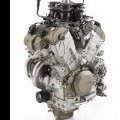What's in a fork swap?
-
Similar Content
-
- 17 replies
- 4,034 views
-
what to say
By BUSSYSSU,
- 1 reply
- 1,228 views
-
what to say
By BUSSYSSU,
- 0 replies
- 1,023 views
-
- 137 replies
- 50,613 views
-
What do YOU need? 1 2 3 4 42
By RidersDiscount,
- 1,031 replies
- 196,445 views
-






Recommended Posts
Join the conversation
You can post now and register later. If you have an account, sign in now to post with your account.